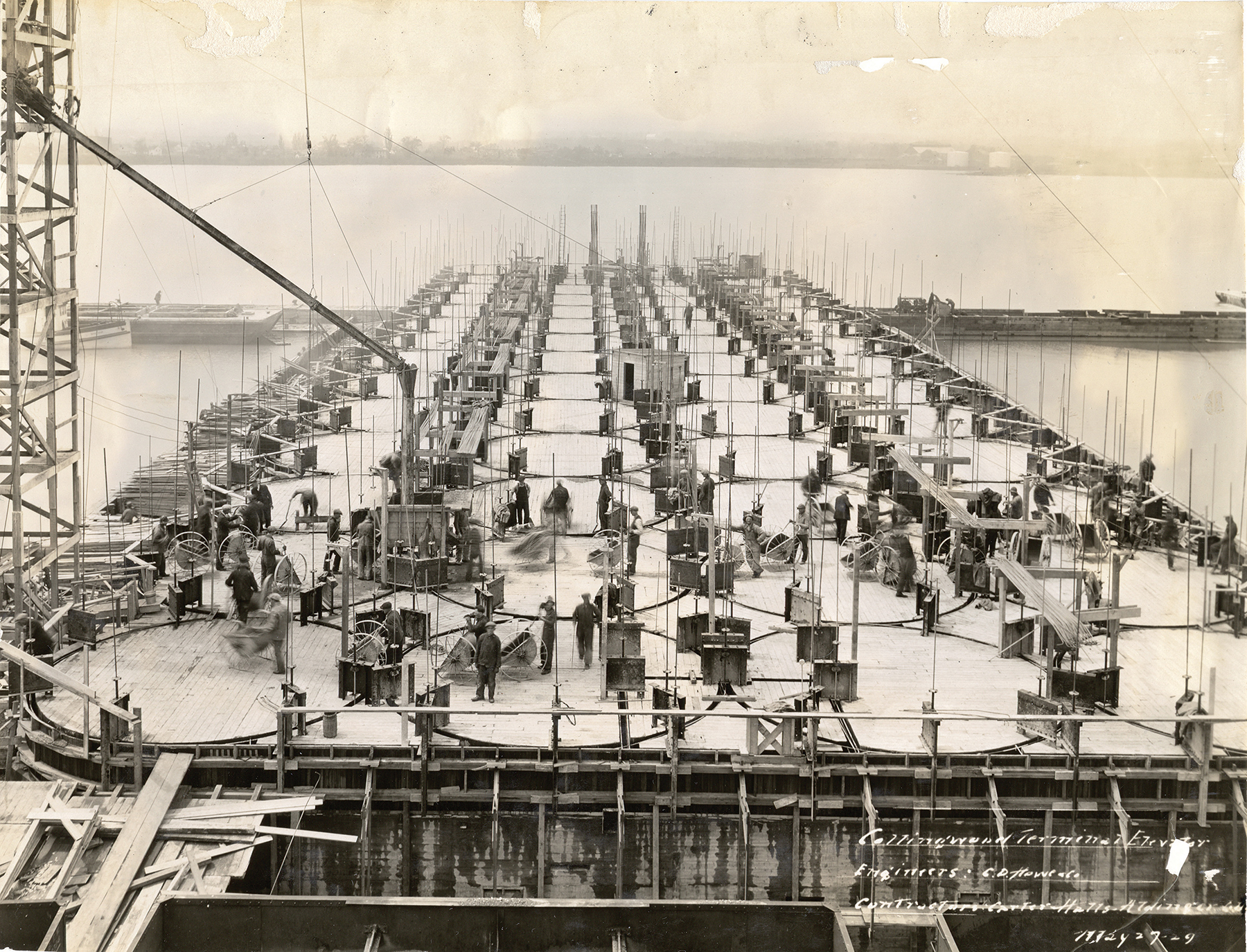
This photo from 1929 shows the Collingwood Terminals in the early stages of construction. The building process was a welcome sight, as a new concrete grain elevator had long been needed to replace the previous wooden structure, providing greater capacity to serve the growing trade and the larger ships carrying grain across the Great Lakes.
Forty men were employed to build the modern elevator, at a cost of $800,000 (almost $12 million in today’s dollars). On May 25, the pouring of the cement for the 52 bins began, and by May 30, the foundation and the ‘mat’ had been completed. From this massive foundation, the concrete bins, each with a diameter of 22 feet, would rise simultaneously to a height of 100 feet.
Pouring went on day and night until June 13, when all 52 bins were complete. A 96-foot-high workhouse was added on top, making the total height from the water level almost 200 feet. On September 14, 1929, the steamer Munising delivered the first shipment to Collingwood’s sparkling new grain elevator, which boasted a total capacity of two million bushels.
The Collingwood Shipyards closed in 1986, and the grain elevator ceased operation in 1993. Since then, the imposing structure has held its own as an iconic local landmark and one of the last remnants of Collingwood’s shipping industry. ❧
Source: Collingwood Museum













